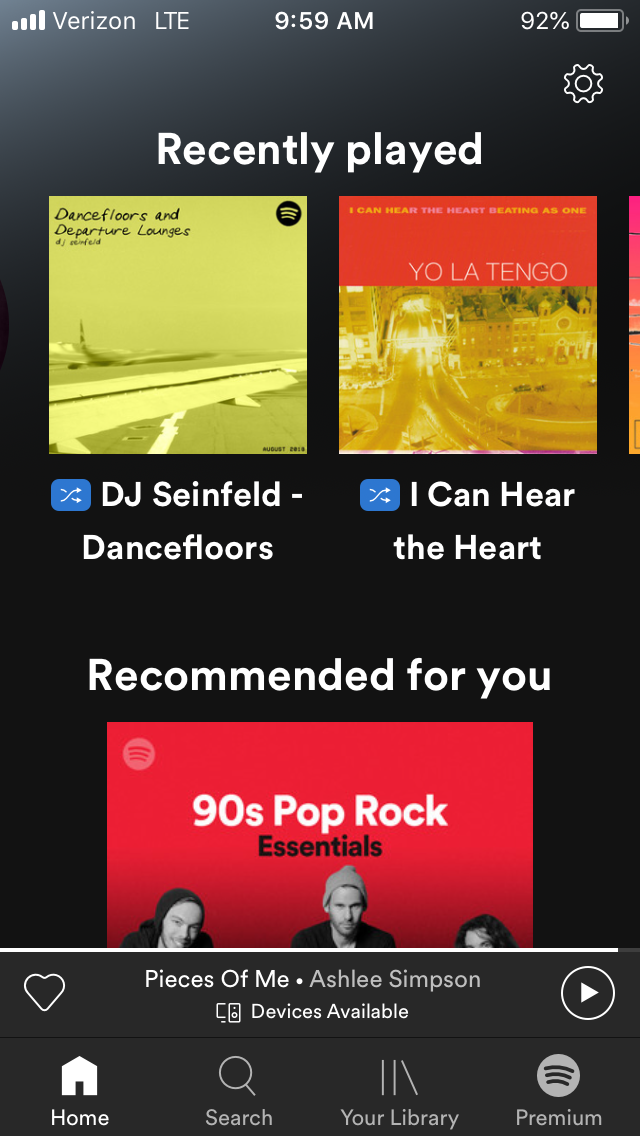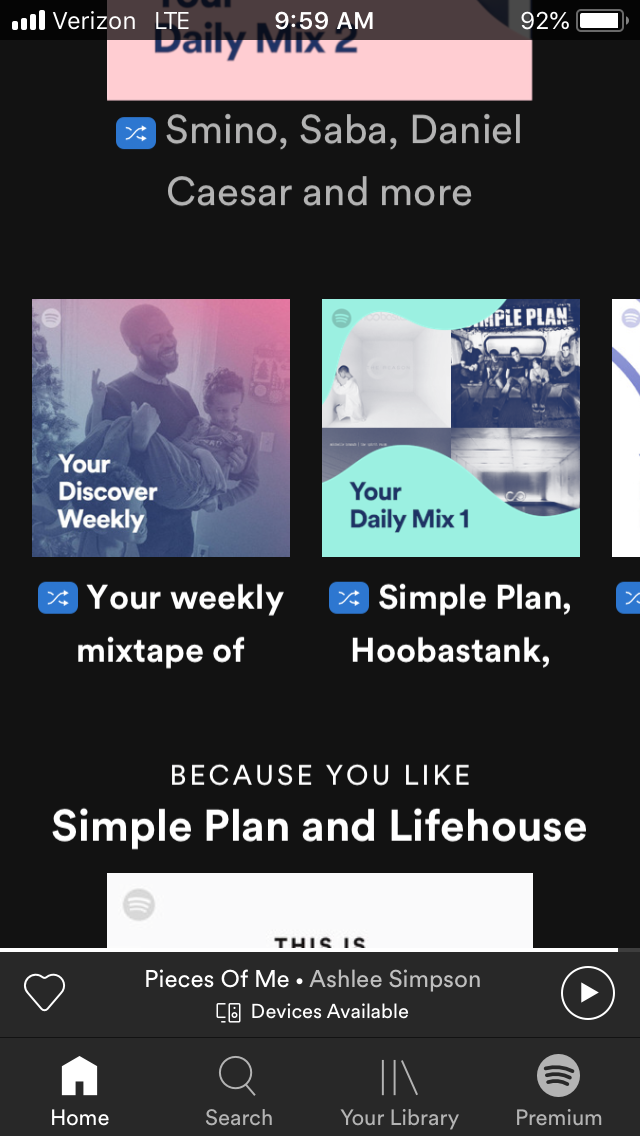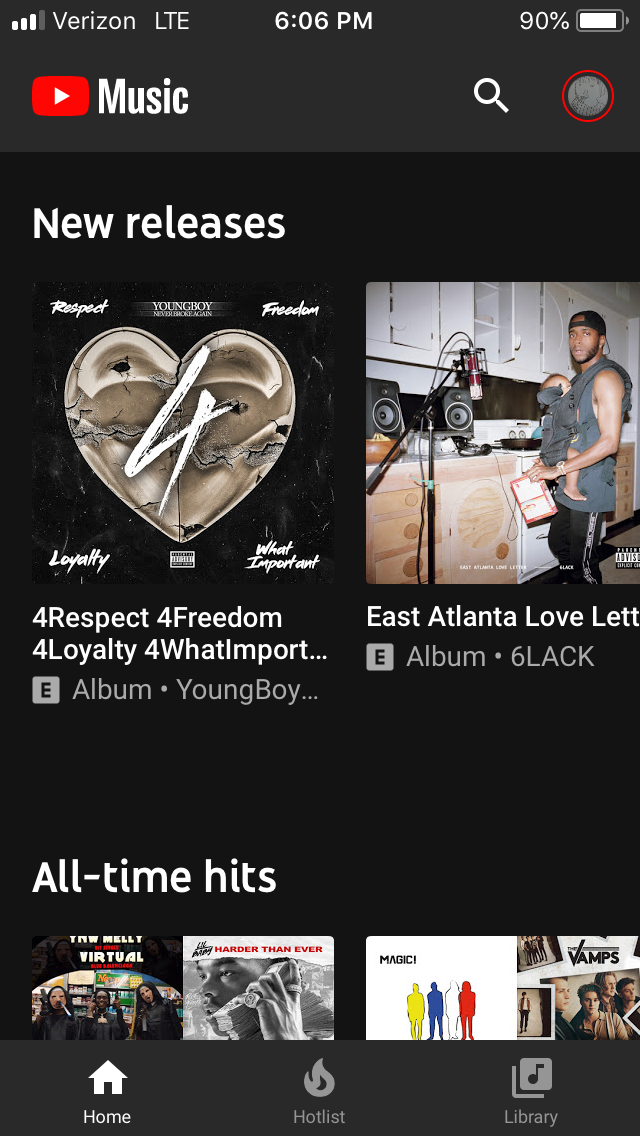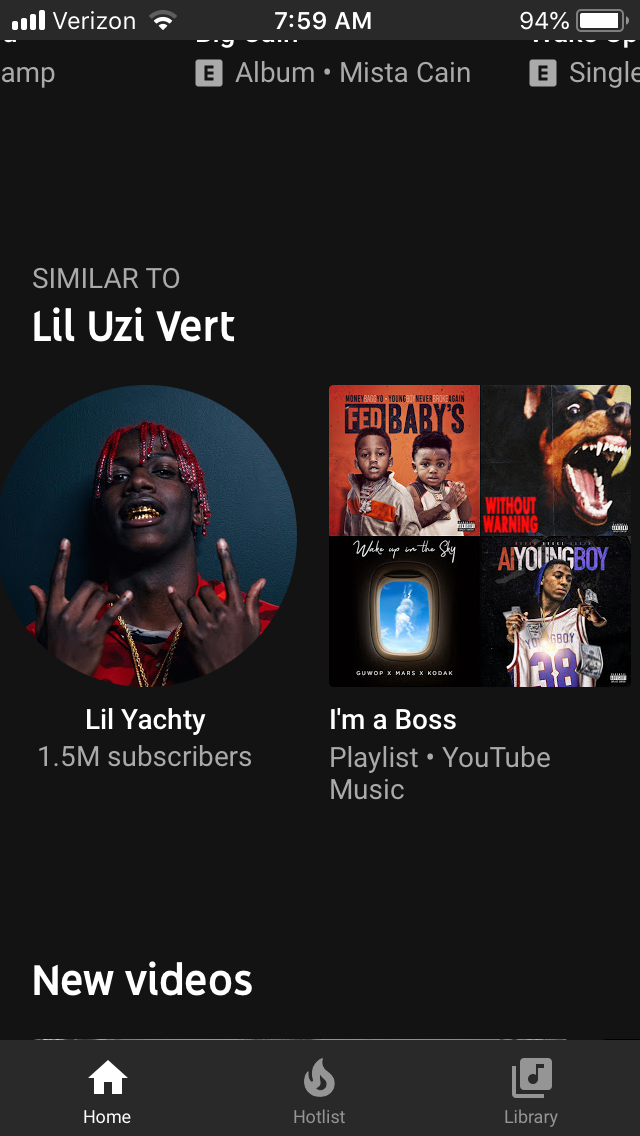A Dive Into the Spotify and YouTube Music App Experience
Hello, I hope you readers are doing well this week. I slightly changed the newsletter format for my contact information is now at the bottom, so I can just hop more quickly into this week's essay. My other note is again I got a number of new readers this week, which is great. However I’ll say this newsletter is a different than my typical ones so if you’d rather see my more in-depth thoughts on various industry topics go here. Otherwise, enjoy reading below.
Last week after I wrote about how even if Spotify has over 50 million American users it would appear that major artist albums continue to over-perform on Apple Music. I got well-reasoned feedback saying how Spotify is solely focused on playlists, not album consumption, so even with a size advantage the two platforms can be so close to this particular form of music consumption.
I thought this wasn’t only a fair point but one so obviously correct I felt a slight need to go a bit deeper into that. Except I’m not going to talk about curators, live concerts, or whatever fluff is attached to the Big Playlist narrative.
My focus this week is on Spotify’s free app and YouTube Music’s premium app. I don't pay for Spotify explicitly for the purpose of hearing / tracking advertising, so yes I'll admit this isn't exactly apple to oranges, but YouTube Music's free version visually mirrors the premium one. If y’all enjoy this then maybe I’ll do Apple Music and SoundCloud next week and if not I’ll keep the topic train moving. All of this being said here’s what over 30 million American Spotify users experience when they open the app.

Spotify starts with the music you’ve recently played. A tact similar to Netflix or YouTube, where users are promoted to pick back up on the video they were just watching. This is a slightly perplexing choice, since your most recently played song is always sitting at the bottom of any music app. I understand it for watching a tv show season, but listening to an album is a little less dependent on picking-up where one left off. The other fact is the consumer attention ask of a Netflix/YouTube video (10+ minutes) is much greater than a single Spotify song. That’s why it's more interesting to see what happens as one scrolls down the app.

Playlist after playlist follow each other in what feels like an endless scroll. What’s interesting is that Spotify does offer more traditional forms of music consumption like the album, EP, or compilation but from the home screen they're all buried away. Is a listener wanting to hear Bruno Mars? What would be promoted is the “This Is Bruno Mars” rather than his most recent album. p
(Last year, Liz Pelly made this excellent point in her Baffler essay 'The Problem with Muzak' when she wrote: "In its quest for total power and control, Spotify has prioritized its own content, and it has made it notably more difficult to find albums rather than playlists. Search an artist’s name, and you’ll more quickly find a Spotify-branded compilation of that musician’s work than an album.")
I’ve cited this statistic for what feels like an endless amount of time but in Spotify’s F-1 filing they boasted how 30% of music consumption occurs on their curated playlists. I’ve rebutted that it means despite this aggressive campaign to force listeners into a playlist first world, 70% seemingly ignore everything happening on this opening screen to find the music they want. But I don't even think I realized just how much a rebuff of Spotify's own systems that stat is when you look at the app design. There is no subversive usage of a music streaming platform but never consuming music from an official Spotify playlist, at least within their ecosystem would be radical. It's fairly clear Spotify's priorities are playlists first, second, and third, but how does YouTube Music approach the same space?


The top of my app is “Your favorites” essentially just the tracks I liked and a personalized playlists of what YouTube thinks I want. Right below the initial recommendations is a user's recent playing history, which is a typical feature of YouTube, but again within a music context feels slightly strange.
YouTube Music unlike Spotify isn't wedded to the playlist gospel and thus juggles quite a bit more content than its Swedish peer. There are “Recommended music videos” that are exactly what the titled foretold and “New releases,” which is an interesting combination of albums, EP, and singles. YouTube Music produces its own playlists but where as Spotify's playlists are the only option, they're always presented as one of many options within a broader ecosystem of music consumption.

Earlier this year week in my app I got a “Similar to Lil Uzi Vert” recommendation, which again was a grab bag combination of YouTube Music official playlists (“I’m A Boss”), albums (Culture II), and artist pages (Lil Yatchy). I’ve written a lot about YouTube Music before and after its launch and how generally I feel the product is a painful Spotify clone—also what happened to Tuma Basa anyone. Beyond the basic interface of the two apps, which look almost exactly the same YouTube Music’s issue is that it doesn’t know how it wants its users to consume music. Too many options are put in front of the user, where the elegance of Spotify is that one can just press play and go.
(Ironically this is also the best quality of YouTube's controversial auto-play feature, which YouTube Music oddly didn't build more centrally into the app.)
Now to circle back to Apple Music albums over-performing compared to Spotify. After looking at bit more at Spotify's free app, which is again is a larger user based than paying American Spotify users, I can't say I'm shocked at this fact any longer. Non-paying Spotify users couldn’t even play through an album in the correct sequence, since the free version is limited across the board to shuffle mode. That means there is over 30 million Spotify users who are effectively isolated into a Spotify or personal playlist only listening experience, unless they’re on their desktop.
Last decade in the 2000s when iPods were huge there was an idea that you could have thousands of songs in a single place and access all of these random MP3s, legal or not legal, but the burden of choice was on the music consumer not on the platform itself. Spotify, and Pandora it should be noted, offers the opposite. Instead there is access to all music but choice and ownership are disconnected. An successful artist on Spotify can be completely fan driven but the platform is design fairly well to AstroTurf and mask acts who may only have one song on a few major playlists but are positioned to be huge.
YouTube by comparison arrived in the iPod era, where the onus of consumption was on the user to know what they want and to seek it out and curate from there. YouTube Music finds a rather squishy middle ground because YouTube's recommendation system is the best of any platform and yet the app isn’t centered on that system. Instead there is no center, because the app cannot decide if they're catering towards super fans or people who'd rather just let the algorithm take them for a ride.
6 Links 2 Read
RapCaviar Gender Tracker - Andy Friedman
Last week, A data journalist Andy Friedman sent me this little program he made that does a running gender breakdown of RapCaviar. The information isn’t too shocking: Hella dudes, mucho bros, lotta guys. Still, I’d guess a few of y’all would find this interesting.
Why So Many Hip-Hop Producers Are Putting Business Before Beats - Pitchfork
Happy to Cherie Hu’s piece on this topic get out there. My only other note is earlier this year Sonny Digital suggested a music producer union to help with struggling producer wages...certainly not a bad idea.
Spotify Sued for Gender Discrimination, Equal Pay Violation - Pitchfork
The headline mostly speaks for itself but one small note. Hong Perez in her suit according to Pitchfork alleges she was fired for breaking the company's code of conduct despite it being known other male peers engaged in the similar actions. I think accepting discounted tickets is something like payola but I'd be interested to see if anymore light is shed on this particular detail.
Paid Music Streaming Subscribers Surpass 50 Million in US, But There's a Twist: Exclusive - Billboard
Scoop: 20 million people are sharing paid music accounts with other people. I’d say something here about how paying $10 a month for access to all of the music in the world is actually still too expensive for most people, especially globally, but the facts already appear to show that.
Fans Are Spoofing Spotify With "Fake Plays," And That's A Problem For Music Charts - Buzzfeed News
I love all stories about “Fake plays” and scams within the music industry. The fact the story highlights how little is being done to solve it sort of proves just how vapid and obtuse so much of language around music streaming remains, and self-included in this critique.
Universal Music Publishing COO criticises Spotify over videos - MusicAlly
This story is a couple weeks old but I find the specific grip interesting and I regret previously overlooking it. Marc Cimino, the COO in the title, expressed contempt towards Spotify over not paying publishers enough for music used in their playlist videos. This is slightly confusing to me because I never noticed a big difference between ads I experience in Spotify playlists with music videos and ads in outside of those playlists. And unless RapCaviar is taking in a higher ad bucket, then why would Spotify pay out more for video content versus a song stream? This strikes me again like when labels complained about YouTube ads without ever acknowledging YouTube’s entire business model shifted throughout the 2010s to less favor music content. But, if I’m outta line here please do explain.
The Penny Fractions newsletter arrives every Wednesday morning (EST). There is an additional $3 a month newsletter that’ll arrive every Friday morning if you’d like to subscribe. The Penny Fractions artwork was done by graphic designer Kurt Woerpel and his work can be found here. Any comments or concerns should be sent to pennyfractions@gmail.com. Also please call into any local radio station to promote the newsletter.